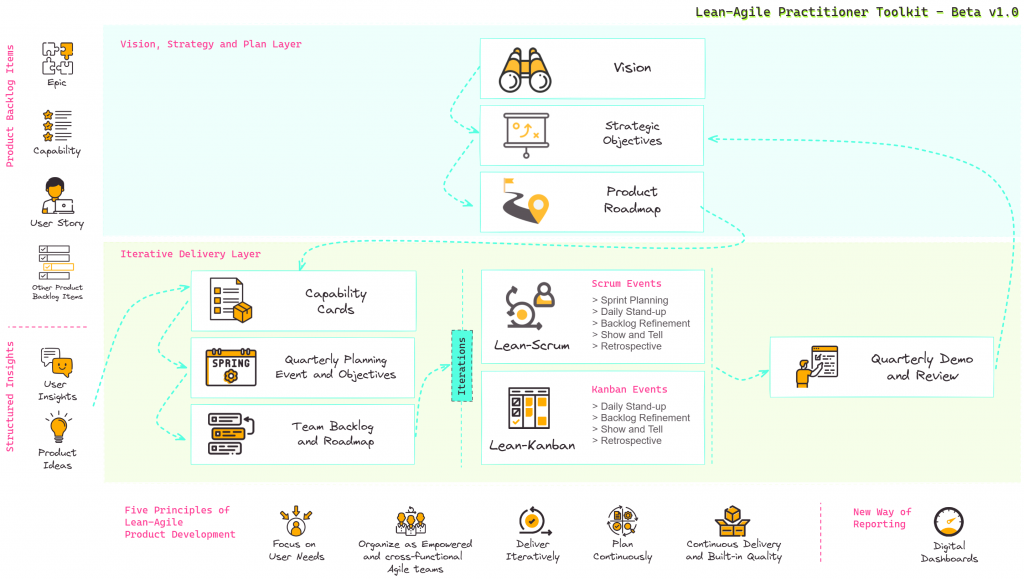An epic is a large body of work that takes more than a calendar quarter to deliver. It can be broken down into a number of smaller capabilities.
Recommended Epic Format
We recommend the following format for epics:
- Epic Level User Story (What/Why):
- An epic can potentially serve more than one user need and even more than one user type. However, we need to capture a very high-level user story that reflects the essence of the epic here.
- Example: Epic: Role-Based Access
- User Story: As a User, I want to have secure access to the application so that my privacy and information can be protected.
- Context/Background (Why):
- This is a very high-level explanation of the epic. Briefly describe the current situation and why this epic is needed. What problem are you trying to solve or what opportunity are you trying to capture?
- What We Want to Achieve:
- Clearly state the desired outcome of completing this epic. What value will it deliver?
- Design Notes (What/How):
- Outline the high-level design considerations for the epic.
- Tech Notes (How):
- Briefly describe the technical considerations for implementing the epic.
- Capabilities and Capability Cards:
- List the capabilities that will be delivered to complete the epic. Include links to their corresponding Capability Cards for detailed information.
- NFRs/Cross-Cutting Considerations:
- Identify any Non-Functional Requirements (NFRs) or cross-cutting considerations that apply to the epic.


